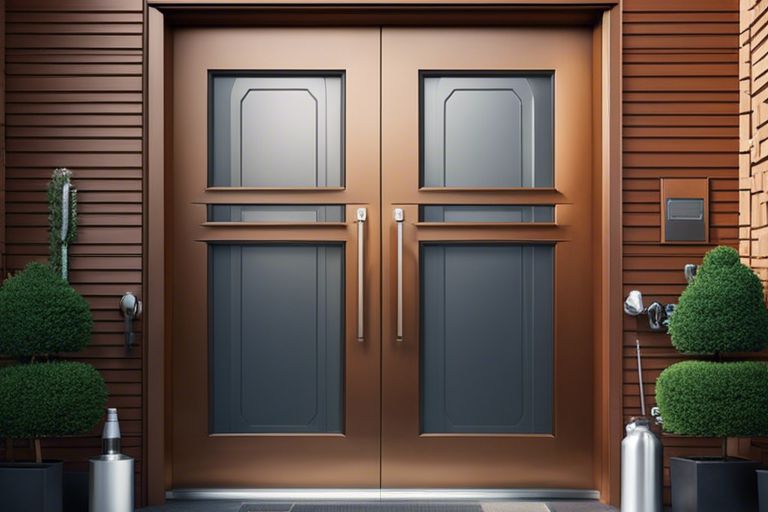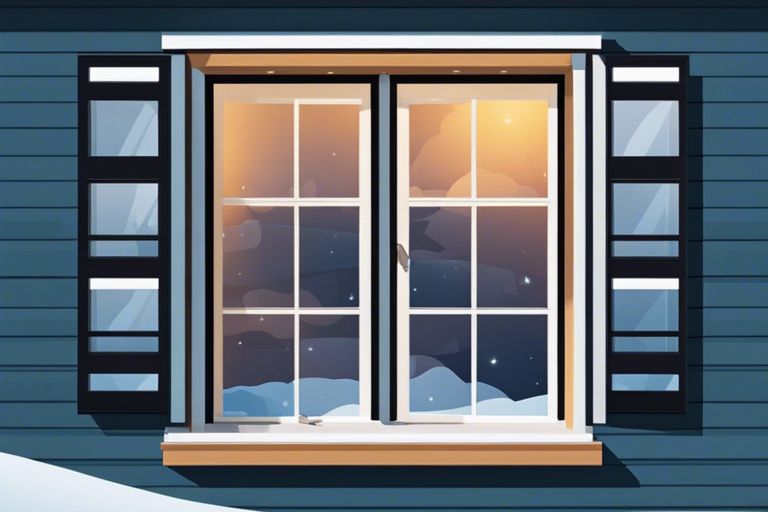Curtain wall panels have revolutionised the construction industry, offering a range of innovative features and benefits that have quickly made them a popular choice for modern buildings. These panels are designed to provide excellent thermal insulation, energy efficiency, and weather resistance, ensuring a comfortable interior environment while reducing energy costs. Their lightweight and durable nature makes them easy to install, while their versatility allows for creative design options and customisation. With the ability to enhance aesthetics and maximise natural light, curtain wall panels are an essential element in contemporary architectural design.
Key Takeaways:
- Energy efficiency: Curtain wall panels help improve a building’s energy efficiency by providing insulation and reducing heat loss.
- Aesthetic appeal: These panels offer a modern and sleek appearance, enhancing the overall look of the building.
- Structural flexibility: Curtain wall panels allow for flexible design options, as they can be customised to fit different shapes and sizes of buildings.
Historical Development
The use of curtain wall panels in architecture dates back to early civilisations, where buildings were constructed using basic materials such as mud bricks, wood, and stone. Over time, architects and builders experimented with different façade systems to enhance both the aesthetic appeal and structural integrity of buildings.
Evolution from Early Building Facades
From the simple mud walls of ancient Mesopotamia to the grand stone facades of Roman architecture, the evolution of building facades has been a journey of innovation and adaptation. During the Industrial Revolution, advancements in materials such as glass and steel revolutionised façade construction, leading to the development of early curtain wall systems.
With the rise of Modernism in the 20th century, architects began to explore new design possibilities, pushing the boundaries of structural engineering and architectural expression. This paved the way for the integration of curtain walls as an essential element in contemporary building design, allowing for more open and light-filled spaces while maintaining structural stability.
Technological Advances in Materials and Design
Technological innovations in materials and design have played a significant role in the evolution of curtain wall panels. The introduction of lightweight yet durable materials such as aluminium and composite panels has enabled architects to create complex façades that were previously unattainable. Additionally, advancements in glass technology have allowed for larger, more energy-efficient windows that contribute to sustainable building practices.
One example of a groundbreaking technological advance in curtain wall design is the development of unitised curtain wall systems. These systems involve prefabricating panels off-site, resulting in quicker installation times and improved quality control. Unitised systems have revolutionised the construction industry by offering increased efficiency and cost-effectiveness in building projects.
Features of Innovative Curtain Wall Panels
When it comes to curtain wall panels, the innovation in design and technology has revolutionised the way buildings are constructed. These panels offer a multitude of features that set them apart from traditional building facades, making them a popular choice for modern architectural projects.
Energy Efficiency Improvements
Curtain wall panels are designed to enhance the energy efficiency of buildings by incorporating advanced thermal insulation materials and techniques. This ensures that the building remains well insulated, reducing heat loss and ultimately lowering energy consumption. Additionally, innovative panels often include features such as low-emissivity coatings and insulated glass units to further improve thermal performance.
The energy efficiency improvements offered by these panels not only contribute to reducing carbon emissions and promoting sustainability, but also lead to cost savings for building owners through reduced energy bills over time.
Aesthetic Enhancements and Design Flexibility
Innovative curtain wall panels not only offer functional benefits but also provide aesthetic enhancements and design flexibility. Architects and designers can choose from a wide range of materials, finishes, and configurations to achieve the desired look for the building facade. This allows for customisation and personalisation, creating visually striking and unique structures.
The design flexibility of these panels enables architects to unleash their creativity and bring their vision to life, resulting in buildings that stand out and make a statement in the urban landscape.
In addition to the aesthetic benefits, the design flexibility of curtain wall panels allows for the integration of other building elements such as sun shading devices, ventilation openings, and decorative elements, further enhancing the overall design of the building.
Structural Innovation and Performance
One of the key features of innovative curtain wall panels is their structural innovation and performance capabilities. These panels are engineered to withstand various loads and environmental factors while providing structural stability to the building. Advanced materials such as high-strength glass and aluminium alloys are used to ensure durability and longevity.
The structural innovation and performance of these panels not only ensure the safety and integrity of the building but also allow for larger expanses of glass and increased natural light, creating brighter and more inviting interior spaces.
Moreover, the structural design of curtain wall panels can be tailored to meet specific project requirements, enabling architects to push the boundaries of design and create iconic structures that inspire awe and admiration.
Integration of Smart Technology
Modern curtain wall panels are increasingly incorporating smart technology features to enhance building functionality and efficiency. These panels can be integrated with building management systems to monitor and control various aspects such as lighting, temperature, and security. This integration allows for improved occupant comfort and productivity.
The integration of smart technology in curtain wall panels not only elevates the building’s performance but also positions it at the forefront of technological advancements in architecture and construction. Buildings equipped with smart curtain wall panels are more sustainable, efficient, and responsive to the needs of occupants.
Furthermore, the integration of smart technology opens up a world of possibilities for future innovation, paving the way for smarter, more connected buildings that adapt and evolve with the changing needs of society.

Benefits of Using Curtain Wall Panels
Cost-Effectiveness and Economic Advantages
Curtain wall panels offer a range of benefits that contribute to their cost-effectiveness and economic advantages. One of the main advantages is the reduction in energy costs due to the thermal efficiency of the panels. This translates to long-term savings for building owners and occupants.
Additionally, the lightweight nature of curtain wall panels reduces the structural requirements of a building, leading to lower construction costs and faster installation times. This not only saves time and money during the construction phase but also results in increased overall efficiency of the project.
Environmental Impact and Sustainability
Curtain wall panels play a crucial role in reducing the environmental impact of buildings. By enhancing energy efficiency and natural lighting, these panels contribute to sustainable design practices that are environmentally friendly. Moreover, recyclable materials used in manufacturing curtain wall panels align with green building standards.
The reduced energy consumption associated with curtain wall panels leads to lower carbon emissions, ultimately contributing towards a greener future. Building projects that incorporate these panels demonstrate a commitment to sustainable building practices and environmental stewardship.
Environmental Impact and Sustainability: Curtain wall panels provide a modern solution to addressing environmental concerns within the construction industry. Their sustainable attributes not only benefit the immediate environment but also contribute towards a more eco-conscious approach to building design.
Safety and Durability Considerations
The safety and durability of curtain wall panels are paramount in the construction industry. These panels are engineered to withstand various weather conditions and external forces, ensuring long-lasting performance and protection for the building and its occupants.
Moreover, fire-resistant curtain wall panels enhance the overall safety of a building, reducing the risk of fire-related incidents. By prioritising strength and resilience, these panels provide peace of mind to both designers and occupants.
Safety and Durability Considerations: The emphasis placed on safety and durability within the design and construction of curtain wall panels ensures that buildings meet stringent safety standards and provide a secure environment for occupants. These panels are engineered to withstand various challenges, making them a reliable choice for modern architectural projects.
Ease of Installation and Maintenance
Installing and maintaining curtain wall panels is efficient and straightforward, resulting in time and cost savings for building projects. Their modular design allows for quick installation and easy replacement of individual panels, minimising downtime and disruption during maintenance activities.
Furthermore, the low maintenance requirements of curtain wall panels make them an attractive long-term investment. Their durable finishes and resistance to corrosion ensure that the panels maintain their aesthetic appeal and functionality over extended periods without significant upkeep.
Ease of Installation and Maintenance: The user-friendly nature of curtain wall panels facilitates a streamlined installation process and reduces the complexities associated with maintenance tasks. Building owners benefit from the efficiency of these panels, which require minimal effort to preserve their appearance and performance over time.

Future Trends in Curtain Wall Panels
As the architecture and construction industries continue to evolve, the future of curtain wall panels is poised to embrace innovative advancements. From next-generation materials to the potential for interactive building facades, the trajectory of curtain wall panels is towards greater functionality, sustainability, and aesthetics.
Next-Generation Materials
In the quest for more sustainable and efficient buildings, the integration of next-generation materials in curtain wall panels is gaining momentum. These materials include advanced composites, aerogels, and smart coatings that offer improved thermal performance, enhanced durability, and increased design flexibility. By incorporating these cutting-edge materials, architects and developers can create structures that are not only visually striking but also energy-efficient and environmentally friendly.
Furthermore, next-generation materials have the potential to revolutionise the construction industry by pushing the boundaries of what is possible in building design. With ongoing research and development in this field, we can expect to see increasingly innovative solutions that redefine the capabilities of curtain wall panels in the years to come.
Potential for Interactive Building Facades
One of the most exciting developments in the realm of curtain wall panels is the potential for interactive building facades. Imagine buildings that can dynamically respond to external stimuli such as sunlight, temperature changes, or even user interaction. This opens up a world of possibilities for creating adaptive and responsive structures that not only enhance user experience but also optimise energy efficiency.
The integration of sensors, actuators, and smart technologies in curtain wall panels enables buildings to interact with their environment in unprecedented ways. This paves the way for intelligent facades that can adjust their properties in real-time, leading to more sustainable, comfortable, and aesthetically pleasing architectural designs.

The Innovation of Curtain Wall Panels – Features and Benefits
Curtain wall panels have revolutionised the field of architecture and construction with their sleek design and numerous benefits. Their lightweight structure and ease of installation make them a popular choice for modern buildings, providing both aesthetic appeal and functionality. The innovative features of curtain wall panels, such as energy efficiency, sound insulation, and weather resistance, offer a range of benefits to buildings and their occupants. Overall, the use of curtain wall panels represents a significant advancement in architectural design, pushing boundaries and setting new standards in the industry.
FAQ
Q: What are Curtain Wall Panels?
A: Curtain Wall Panels are non-structural cladding systems that are used to cover the exterior of a building. They are typically made of lightweight materials such as aluminium, glass, or composite materials.
Q: What are the features of Curtain Wall Panels?
A: Curtain Wall Panels offer several key features, including providing excellent thermal and acoustic insulation, allowing natural light into the building, improving energy efficiency, enhancing the aesthetics of the building, and offering flexibility in design.
Q: What are the benefits of using Curtain Wall Panels?
A: The benefits of using Curtain Wall Panels include reducing the building’s energy consumption, lowering maintenance costs, increasing the value of the property, improving indoor environmental quality, and providing a modern and sophisticated appearance to the building.






